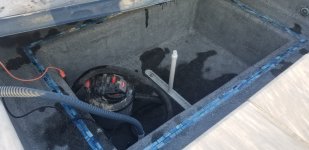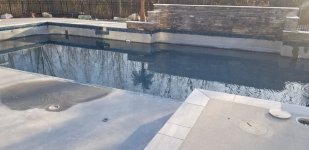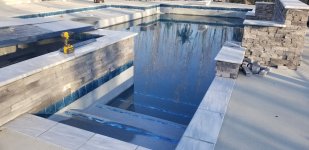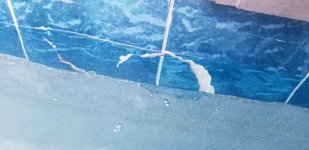Have a new company helping with the close this year. It's a little bit of a hybrid though as I drained the water and they are blowing out the lines and closing some of the equipment. I just ran out of time this year to figure out how to do everything.
After reading up on here, I thought I had to lower the water level down 4-5 inches below the return nozzles, but the company doing the close indicated that I took too much water out and would need to add it back to cover back over the tanning ledge.
Same goes for the hot tub. Drained it completely to winterize it, but he's saying I'll need to add water back there after they finishing closing it.
Pics attached. Can you guide me a little here? the concern was that I would damage the plaster.
The pool is about 3 years old.
Thanks.
Bobby




After reading up on here, I thought I had to lower the water level down 4-5 inches below the return nozzles, but the company doing the close indicated that I took too much water out and would need to add it back to cover back over the tanning ledge.
Same goes for the hot tub. Drained it completely to winterize it, but he's saying I'll need to add water back there after they finishing closing it.
Pics attached. Can you guide me a little here? the concern was that I would damage the plaster.
The pool is about 3 years old.
Thanks.
Bobby







